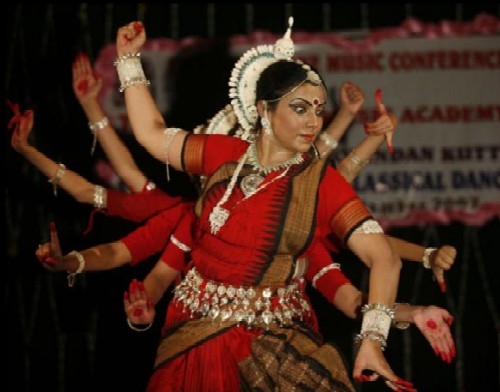
B eautiful Syām, you have been awake all night;T his Saturday there will be a special performance of Indian traditional music, connected with the annual Sangam festival. The 4 performers are renowned both in India and far beyond (see links below).
your lotus-eyes are drowsy.
Red fingernail marks are etched upon your chest
like half-moons.
Your turban, once tied, now dangles on your head:
your clothes are falling off, and your tilak is gone.”
— Poem K207:P3/146:S832, quoted by A. Whitney Sanford, Singing Krishna: Sound Becomes Sight in Paramānand’s Poetry, p. 46.
W hen I have written about Indian classical music several times before in this blog, I’ve mainly focused on long time-scale rhythmic and melodic patterns... some of the features that are maybe most distinctive to a Western listener. But this time when I learned of this special performance and looked forward to the possibility of attending it, I decided to learn a bit about the history and motivations of these musical forms.
W hat great fortune I had!—namely, discovering Whitney Sanford’s excellent 2009 book ‘Singing Krishna: Sound Becomes Sight in Paramānand’s Poetry’ (link below)! It is beautifully written—concise; clear; highly readable—and its detail and insightfulness serve as a tremendous help to the Western reader who wishes to understand performance practice for carnatic and other genres of Indian music, regardless whether it is extemporized or is performed in traditional ritual.
A lso covered at length are the motivations of the structure and orchestration of such music, engineered as it is so as to induce synaesthetic Scriabin-type “audio-visual/sound-heard-as-colors” transcendent experiences in the listener. Besides synaesthetic qualities in the medieval poet Paramānand’s writings and in music that is composed or improvised in a similar manner, Paramānand also propounds the unity of the One and the Many—a mystical oneness of all individuals with the Divine. The infinite and the finite are the same—homeomorphic, according to Paramānand.
T he classical Indian listener is ideally well-familiar with the ritual and with the spiritual context that it is meant to facilitate. Ideally, the listener is also equipped with powerful memories from previous participations in it—and all of those memories are ready to be triggered by the music and ambient sounds, and sights, and scents that are associated with the new year’s festival performance. There is, as Sanford’s book vividly attests, a tremendous physicality to the experience—the entire experience; the music, the dance, the imagery and colors, the scents, everything!—something I had not appreciated before, with my passive, CD/MP3 listening only. Multisensory overload, almost—aiming at achieving spiritual or mystical union.
I f you’re in Kansas City this Saturday afternoon, I hope you will be able to attend the performance and experience something mystical yourself. The performance promises to be deeply enjoyable at the very least! Links below, if you’re interested!
[Note: Praveen's music frequently employs the technique of singing into the flute (gayki style; resembling Judith Shatin's 'Fasting Heart' or George Crumb's 'Vox Balaenae' or Jethro Tull). He is also a master of thanthrakari flute style. Very cool, at least to us who play flute!]

- Sangam music flyer (pdf)
- Pravin Godkhindi (Bansuri)
- Sanchita Bhattacharya (Odissi)
- Tarun Bhattacharya (Santoor)
- Niloy Kanti Dutta (Tabla)
- Nelson-Atkins Museum website
- Odissi page at Wikipedia
- Bansuri page at Wikipedia
- Santoor page at Wikipedia
- Tabla page at Wikipedia
- Hindustani musical instruments links at Wikipedia
- Lavezzoli P. Dawn of Indian Music in the West. Continuum, 2007.
- Ruckert G. Music in North India: Experiencing Music, Expressing Culture. Oxford Univ, 2003.
- Sanford A. Singing Krishna: Sound Becomes Sight in Paramanand’s Poetry. SUNY, 2009.
- A. Whitney Sanford, Assoc. Prof. Religion, Univ. Florida
- Līlā page at Wikipedia
- PunamFlutes.com
- TheChromaticBansuri.com
No comments:
Post a Comment